

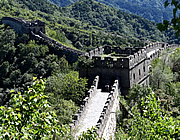
For atmosphere a misty Mutianyu, for dramatic scenery the wild Great Wall, Jiankou - a stunning walk, and for remoteness Jiayuguan Fortress on the edge of the Gobi desert.

We were most looking forward to two things in 2007: the Great Wall and the Terracotta Warriors. So it was with a great sense of excitement that we set out early with our guide for the Mutianyu section of the Wall, and increasing worry that it was going to be too misty to get a good sense of the spectacle.
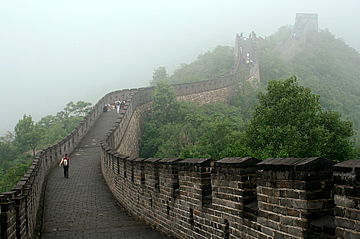
We needn't have worried, the mist began to clear only as we ascended in the cable car, continuing to clear through the morning.
It was an incredibly atmospheric experience; with the farther hills shrouded in mist we got a real sense of the isolation of the soldiers posted here to guard the empire.
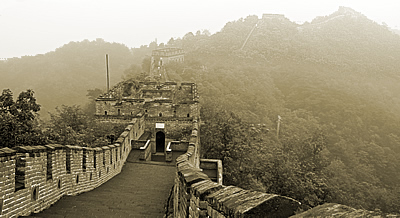
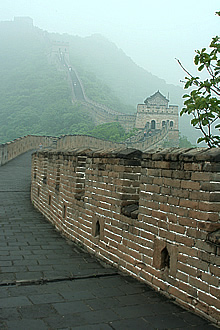
The wall is not just one single stretch but composed of many different spurs and sections built over centuries. Stretching over 25,000 km, including spurs etc., it is an immense structure by any standards, though it's not true that it can be seen from space!
Essentially a defensive structure, to keep out invaders such as the northern tribes, sections were begun as early as the 7th century BC in the Kingdom of Zhou where a square city was built, and continuing through all subsequent dynasties. The wall we know today was mostly built during the Ming dynasty at the end of the fifteenth century.
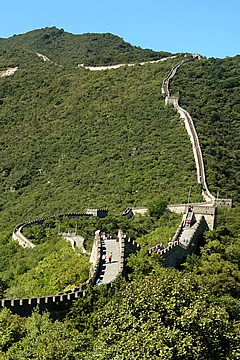 2019
2019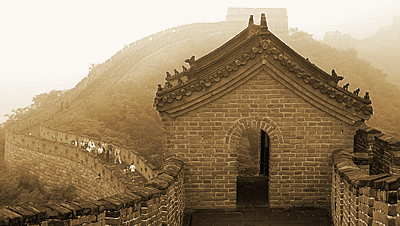
Because of its great length huge numbers of men were needed to man it. The Qin-Han dynasties set up frontier counties along the wall and decreed that a man reaching the age of 23 must register for military service guarding the border for a period of one year. During the Ming Dynasty nine frontier prefectures of strategic importance were established and nearly one million men guarded the wall.

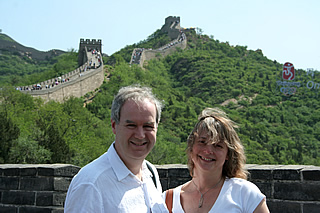
We were so impressed, and keen to see more of the wall if possible, that the following day we visited the Badaling section. This is by far the most touristy section of the wall and can be heaving with visitors, though it wasn't too bad on the day we were there. Nevertheless, we preferred the Mutianyu section.
The Olympics were due to be staged in China in 2008 so there was some publicity on the hillsides with the distinctive running man logo.

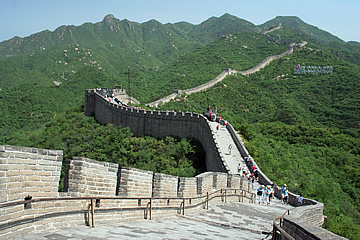

It is almost impossible to appreciate the immensity of the task of those ancient builders, the wall stretches literally as far as the eye can see.
We walked the western stretch as far as it was possible to go, gradually leaving behind most tourists - though some very game elderly Americans also made it to the end!


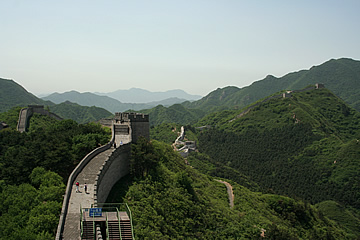
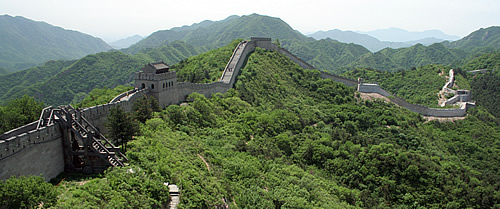
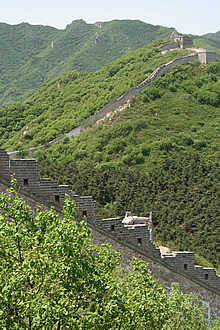
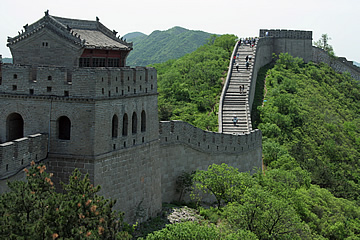

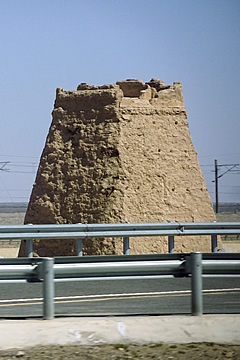
In 2019 we made a mammoth journey starting at Urumqi and ending in Beijing. By a combination of car, train and a couple of internal flights we travelled from place to place and along the way saw more manifestations of the Great Wall. Staying in Jiayuguan we visited Jiayuguan Fort, beautifully restored, guarding China from the western end of the Great Wall.
We had arived in Jiayuguan by car, driving from Dunhuang. About 80km outside Dunhuang we passed a 2,000 year old watchtower and fort that were built to protect Dunhuang.
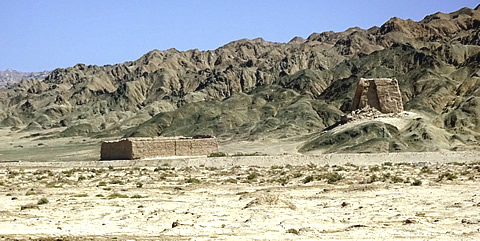
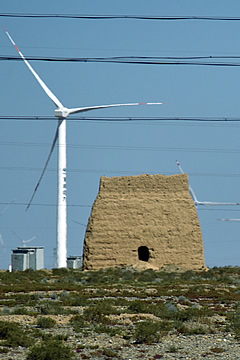
We saw several watchtowers on the road, mostly part of the Han Dynasty (206 BC - 220 AD) Great Wall, but also Ming Dynasty (1368-1644) near Yumen City.
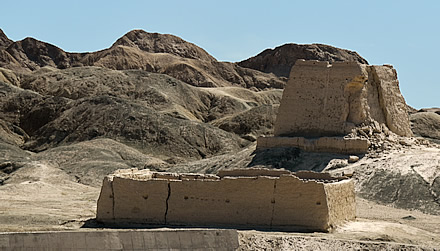
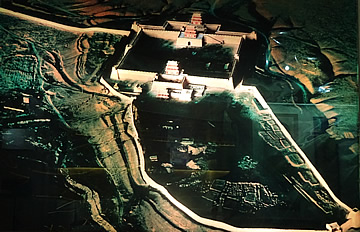 Aerial shot of the fort.
Aerial shot of the fort.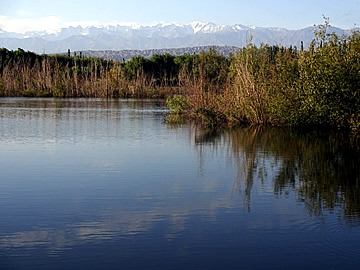
Jiayuguan fort was built in 1372 in the Ming Dynasty and is over 5,000 km west of the Wall's easternmost point, situated to guard the pass at the narrowest point of the Hexi Corridor, one of the routes of the Silk Road, between the Qilian Shan and Mazong Shan mountain ranges.
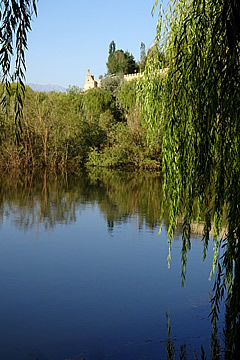
The Qilian are also called the Snow Mountains as they are permanently covered in snow and it is the melt water flow from the mountains that helped to sustain the garrison.

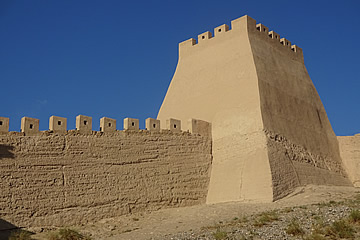
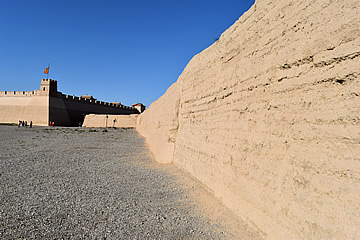
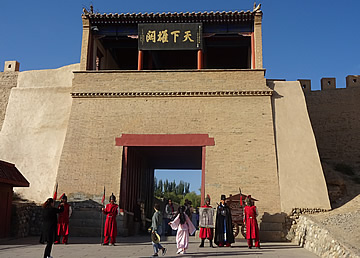
The fort is surrounded by two walls, the outer about 5m high, the inner about 10m with 17m high towers.

To get into the fort proper, having got through the outer wall, an entrance on the south side of each east and west gate leads into a courtyard which acted as a trap for invaders. Here they had to turn left (in the east gate) or right (in the west gate) to enter the longer tunnel through the inner wall. This would slow them considerably, and in the courtyard they could be fired on from the walls.
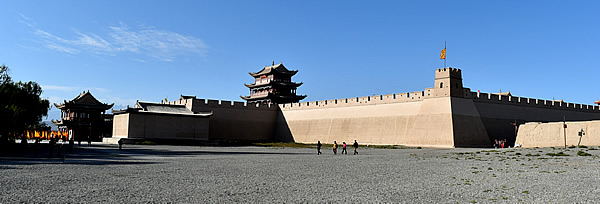
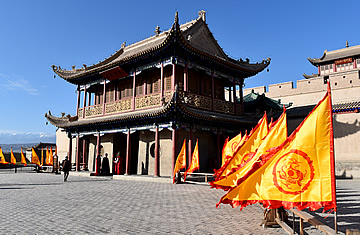
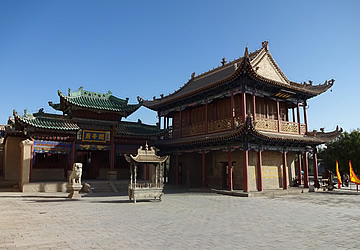
It must have been a desolate place to be posted, on the edge of the bleak Gobi desert, watching for enemy attacks.
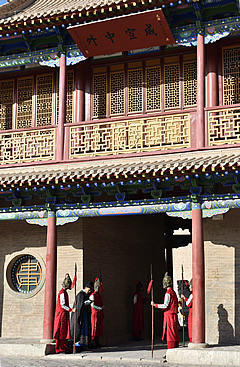
The Wenchang Pavilion and the Guandi Temple stand on the east side of the inner wall at the East Gate - the gate itself is actually on the south side of the courtyard trap wall. Nearby is a small theatre, actually a covered stage and the spectators sat in the wide space between the two walls.
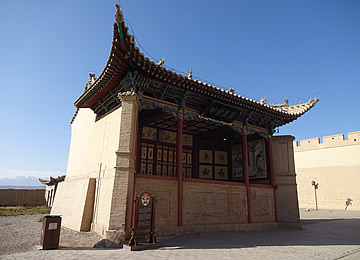
The stage was rebuilt in 1792AD - the 57th year of the reign of Qianlong of the Qing Dynasty. It faces north and the interior is beautifully painted.
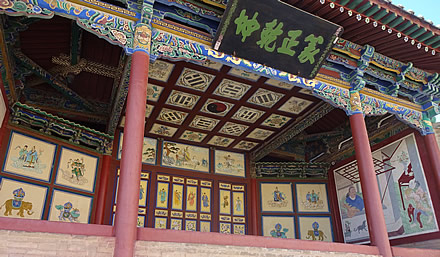
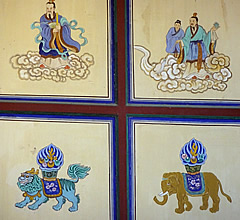
The theatre was once used to entertain the garrison with "performances not only show the stories of sadness, goodness, separation and happy gatherings but also describe different type of people including the wise, the loyal, the foolish and the traitorous, whom can be judged by their facial makeup in operas." (site info board).
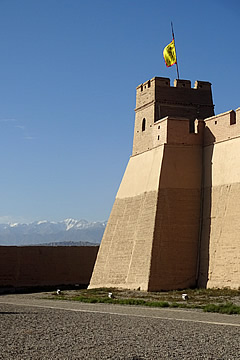
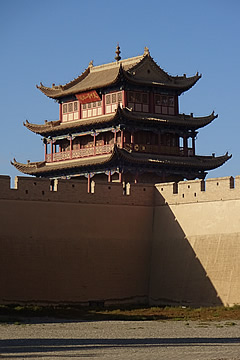
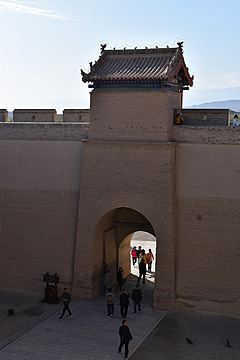
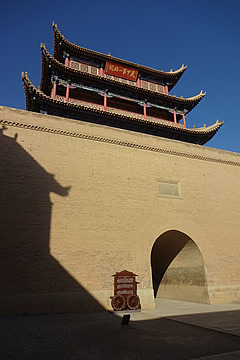
Beyond the trap courtyards of both east and west gates, ramps led up to the top of the inner walls to allow mounted soldiers to ascend for patrols.
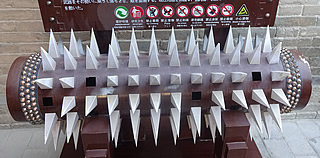
Each ramp is 3m wide, 22m long and inclined at an angle of 23°. If an enemy managed to reach this far logs, boulders, spiked cylinders or other missiles could be rolled down the ramps into the path of the invaders. The ramps have been partly laid with steps for ease of climbing for tourists.
Within the inner wall the general had his quarters - the front part was offices while the rear was his living quarters.
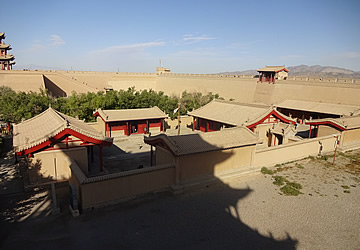
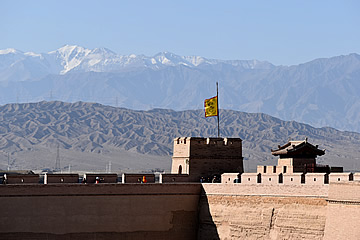
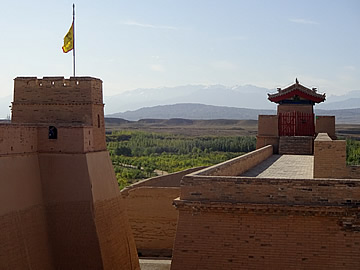
A watchtower, also called a Garrison Tower, stands at each of the four corners of the inner wall. The building on top is 5.4m high, a two-storeyed room with a door on one side, windows on each of the other three sides. Here the soldiers kept watch.
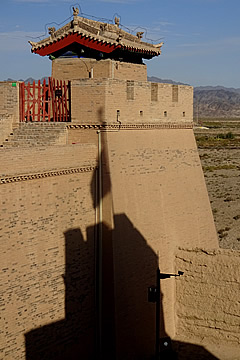
The outer wall also had lookout posts, smaller than those on the inner wall.
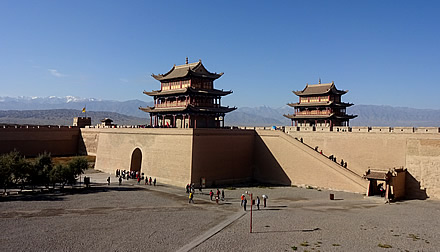
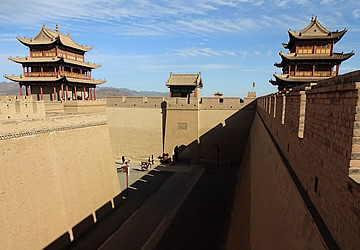
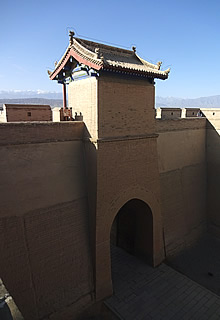
At the west end of the fortress both inner and outer walls have imposing towers. On the inner wall Rouyuan Tower stands over the tunnel leading from the courtyard trap. On the outer wall a seemingly identical tower - Jiayuguan - stands above the western approach to the fortress from the Gobi desert.
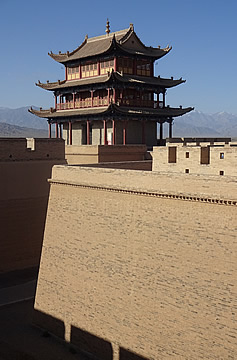
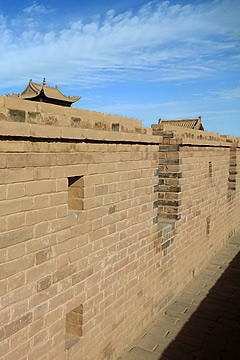 Niches in the wall are for lamps.
Niches in the wall are for lamps.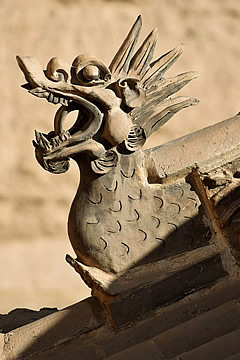
On a ledge on the north side of the Huiji Tower, the south entrance to the courtyard trap on the west side of the fortress, is a single brick. It is said that the overseer in charge of ordering materials for the building of the fortress was so accurate that he calculated the number of bricks required exactly - with one left over!
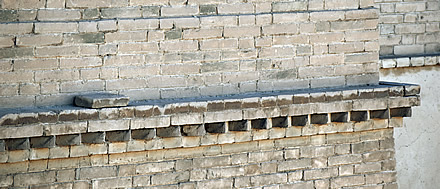
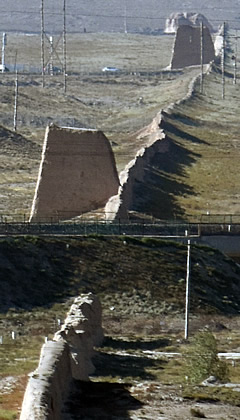
Walls stretch both sides of the fort to bridge the pass, lookout towers spaced at intervals.
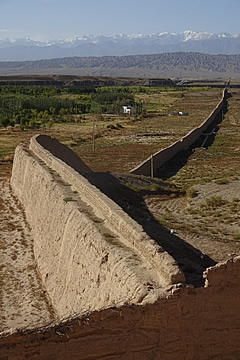
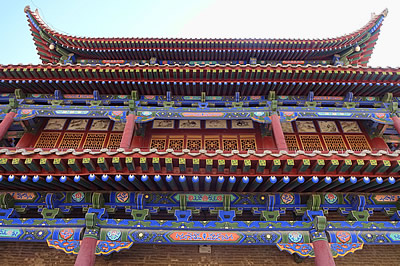
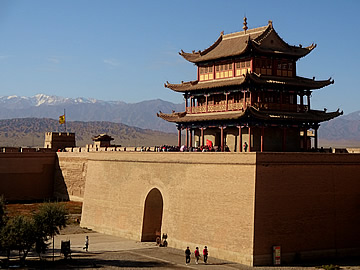
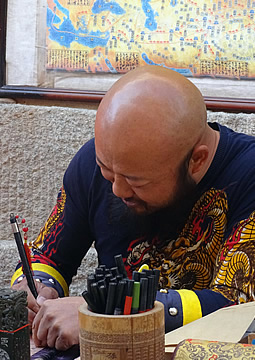
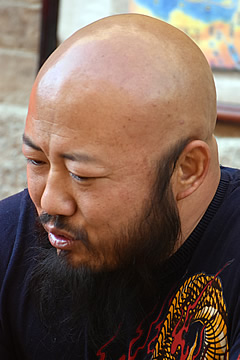
At the Jiayuguan Gate a "customs official" in period dress was preparing permits to travel. In ancient times these were necessary before anyone was allowed to travel west.
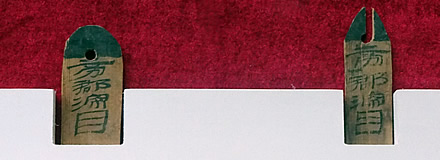
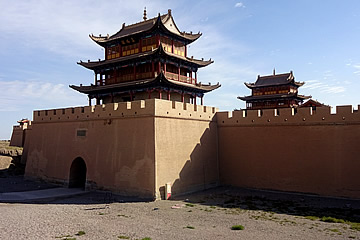
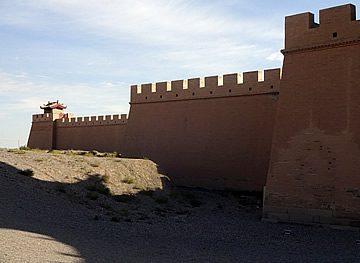
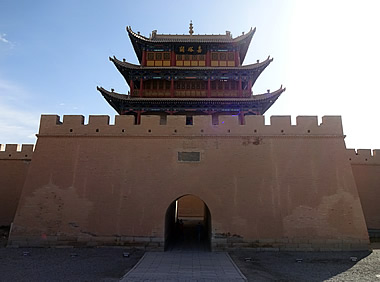
The west gate was also known as the "Gate of Sighs"; because, apart from travellers voluntarily leaving, it was here that those being exiled were sent out into the desert.
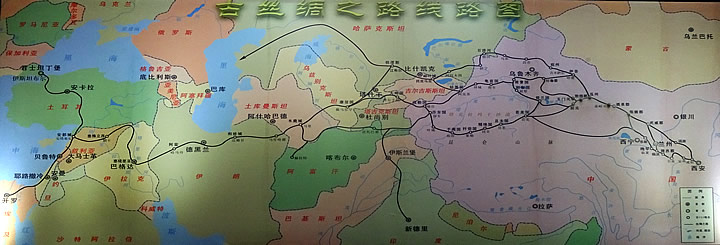
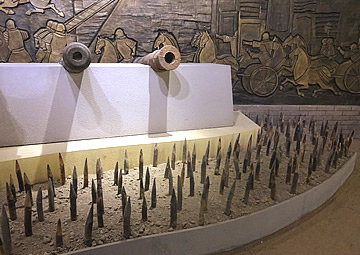
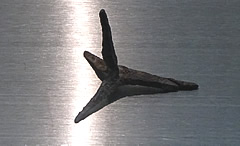
There is an excellent museum here with lots of information on the development of the wall from its origins in the Kingdom of Zhou in the 7th century BC, through the 3rd century BC Qin and Han dynasties, to the final Ming dynasty wall that we can still see so much of today.

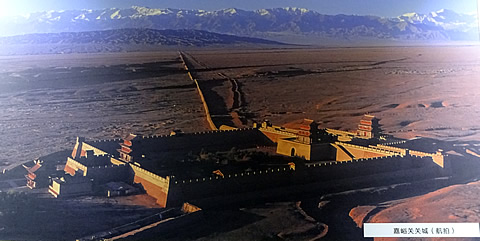
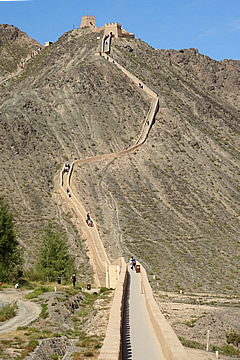
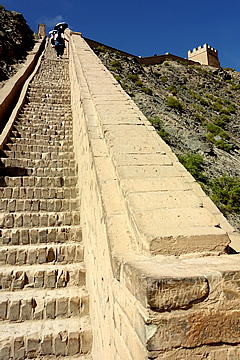
After exploring Jiayuguan Fortress we drove to the Overhanging Wall, the end of the Ming Dynasty Great Wall at the Black Mountains.
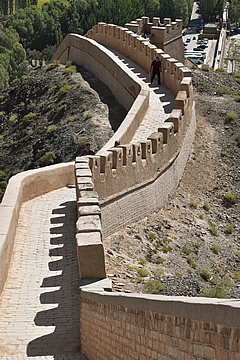
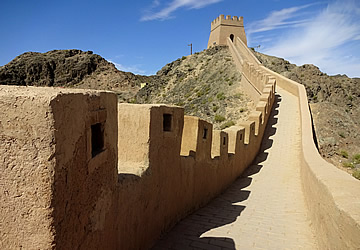
In the 1980s the Wall from the fort to here was repaired and parts of it, as well as watchtowers, were reconstructed, but a good bit is still original.
This was by far the steepest climb we'd had so far on the Wall. 504 steps (I counted) to the top of the end watchtower, plus a few very steep slopes, and maybe half a dozen steps down at one point.

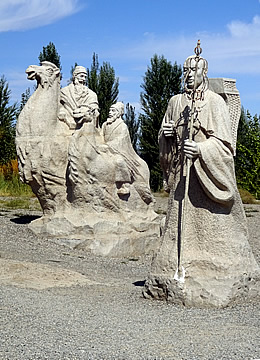
At the base of the steep path down there are a number of sculptures of famous people, including the 7th century Tang Dynasty monk Xuan Zang who travelled to India to learn about Buddhism and returned some 16 years later bringing with him hundreds of Buddhist manuscripts.
The Big Wild Goose Pagoda in Xi'an was built at his behest to house the manuscripts. He spent the rest of his life translating as many as he could.
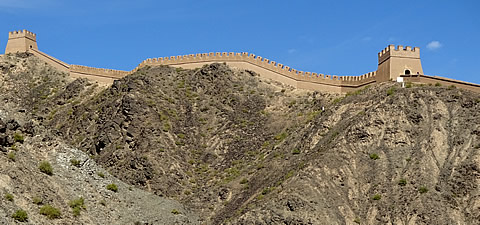
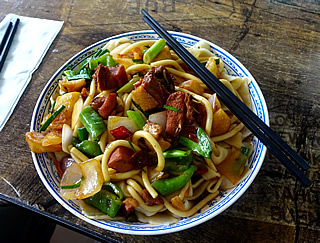
Before catching our next train our guide took us into Jiayuguan to a market where there were many small restaurants.
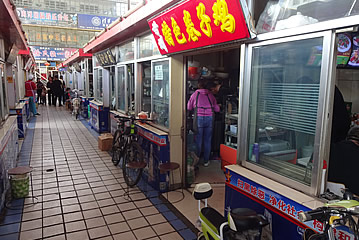
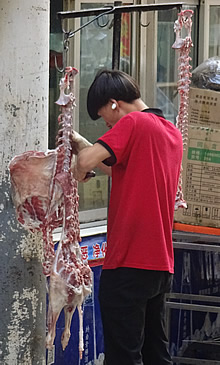
Each restaurant seemed to have a specialty so one would be dumplings, another fried noodles with chicken, another pork in buns (Chinese hamburgers as our guide called them!). He and the driver obviously had a favourite and we settled ourselves at a table and chose chicken noodle dishes - at this stage of our trip we might have preferred the Chinese hamburgers or the fried noodles with chicken - as it was, the dishes were the typical rice noodles and flat ribbon wheat noodles which I wasn't keen on. The chicken was virtually all skin and bone but the vegetables were good.
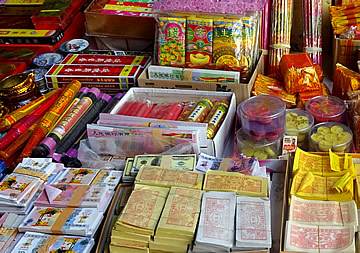
At least our guide paid for this lunch, first time this has ever happened, quite often the guides expect you to pay for them too.
These markets, in out-of-the-way places, are always colourful and full of things we barely recognise.
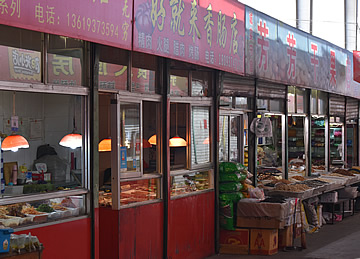
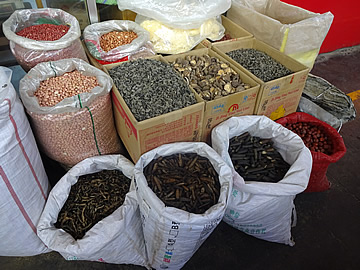
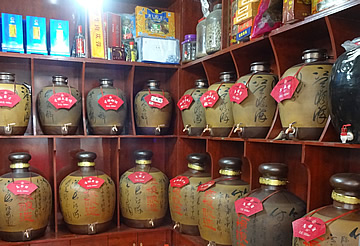
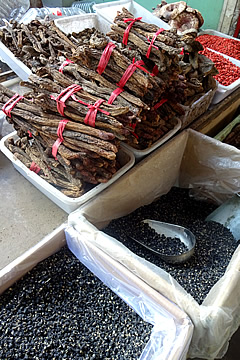
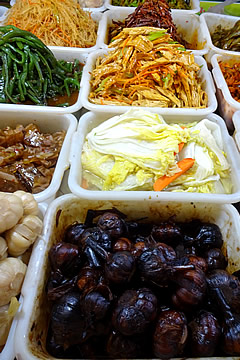
There were several stalls selling a wide array of ready-to-eat salads.
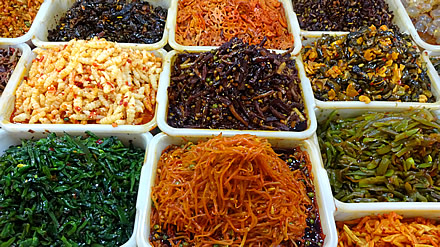

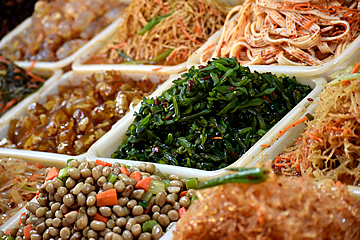
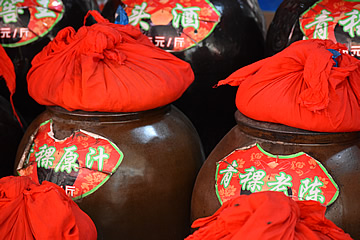
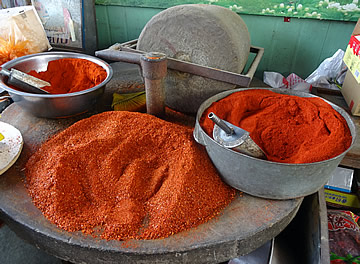
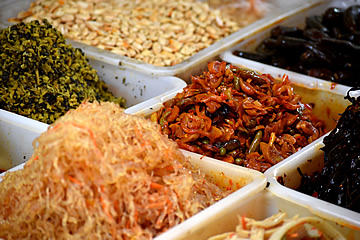
Here were to be found all the usual spices, whole chillies, salads and rice wine, plus a lot of traditional medicines, for example in the form of roots, and household goods.


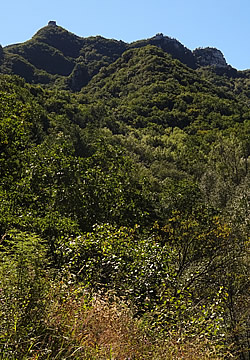
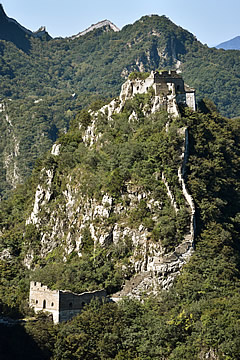
The Great Wall at Jiankou is one of the most dramatic, wild and untouched sections.
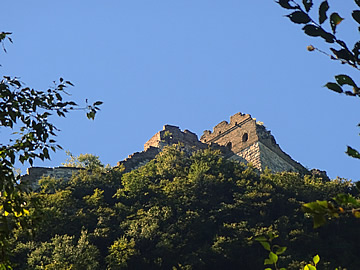
We started at 8:30 from our hotel with our guide and driver. The traffic was pretty bad and it took a while to get out of the city. Two hours later we reached the village at the foot of the steep mountain which we had to ascend to get to the Wall.
It was very daunting, an increase in elevation of 500m, but we did it in an hour which is a pretty good time.
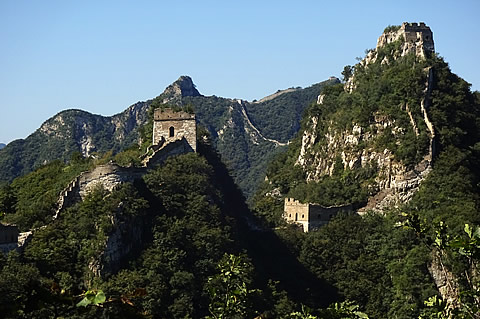
Near the top we started to get incredible views of the wall.
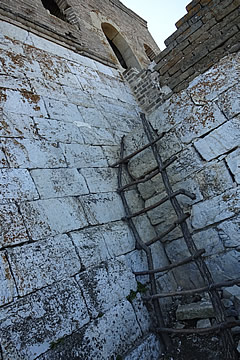
After scrambling up onto the watchtower via a rickety ladder made from thin branches, we climbed up a steep, narrow passage with a couple of very deep steps to reach the top and were rewarded with more stupendous views.
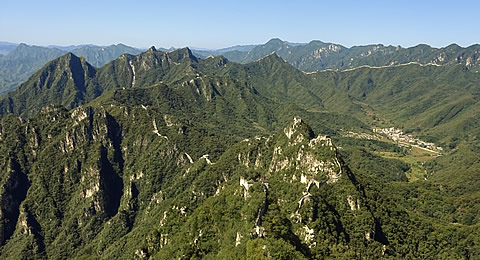
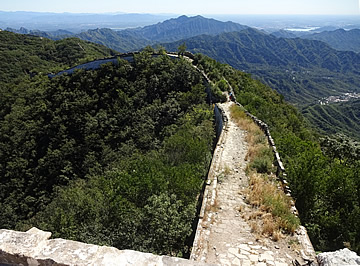
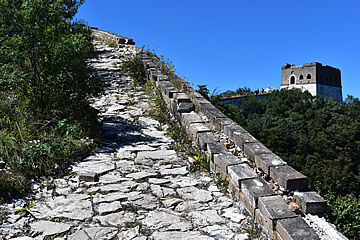
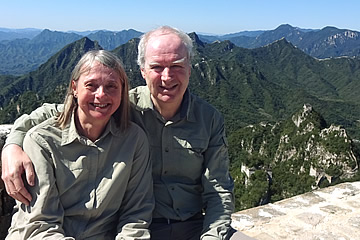
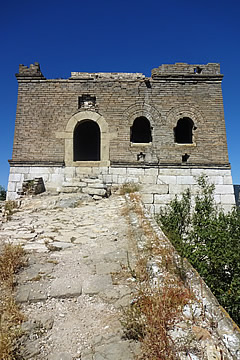
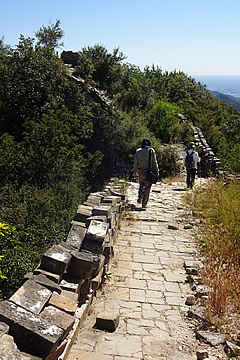
There were a bunch of European walkers doing 100km of the wall in stages over 5 days - very ambitious I thought - some of them were obviously very fit and were going at a really good pace, but others weren't and we beat some of them to the top!
We rested for a while and ate some snacks and water before setting off on the 5km walk.
It wasn't strenuous but quite dangerous in places, with steep drops to either side and smooth cobbles and loose stones underfoot.
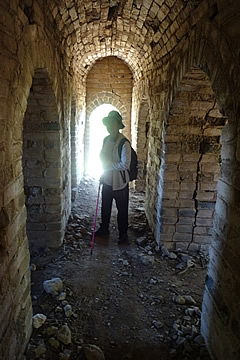
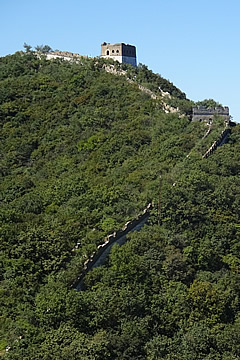
We had to come off the wall at a couple of places where it was too difficult or dangerous.
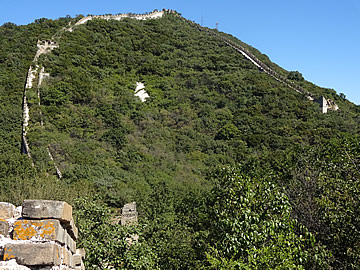
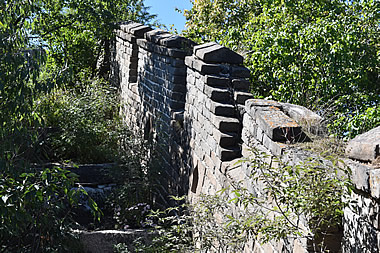

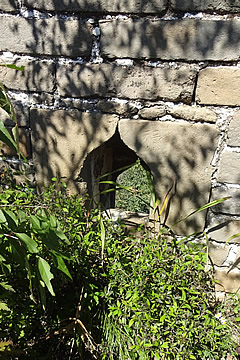
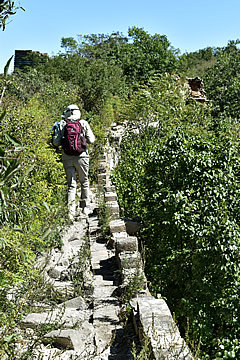
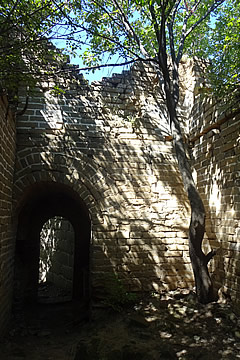
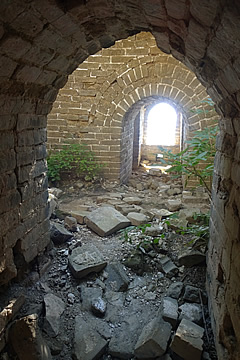
Some of the watchtowers are really quite large inside, with many rooms and alcoves.
In case of attack a fire would be lit on the roof to warn the soldiers at the next watchtowers along the line; for this reason they are also called beacon towers. Smoke was generated if a warning needed to be given during the day, flames if at night. There was always a good line of sight between a watchtower and its immediate neighbours on the wall, for this reason they are not spaced at equal intervals, the spacing depends on the terrain.
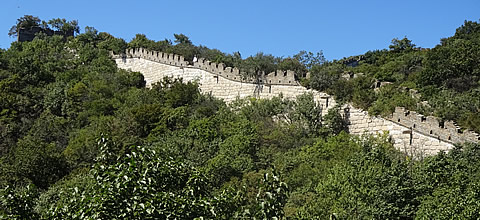
The second time we had to make a detour off the wall was because the only option to proceed was to climb up onto the top of the remains of a watchtower via one rusty length of metal jabbed into the mortar between two stones of the wall. It was a short detour through the shady forest, before we returned to the base of the wall. Here our guide was expecting to find a ladder but there wasn't one! There were a couple of locals fortunately, and one eventually found the ladder in the undergrowth. It was only a short length made from lashed together branches, so we had to stand right on the top "rung" and haul ourselves up onto the wall from there, fortunately we're both reasonably fit!
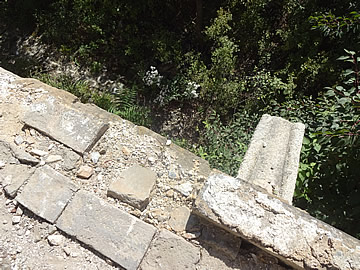
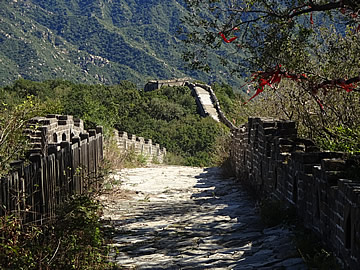
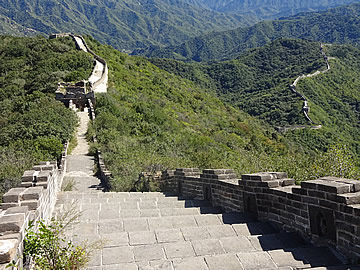
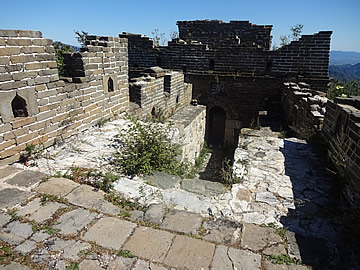
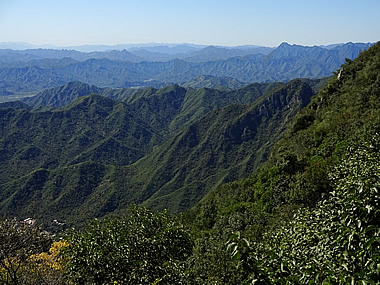
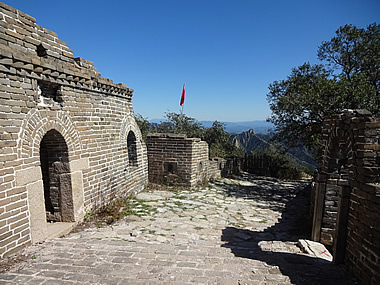
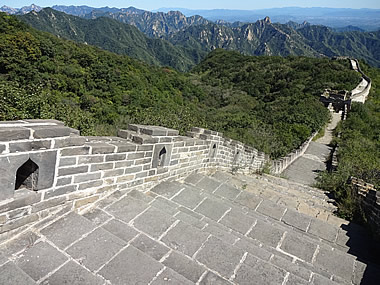
The views were stunning all the way, we could probably have done the 5km in half the time if we hadn't stopped to take so many photographs!
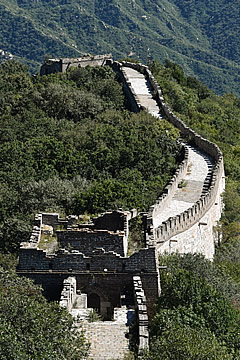
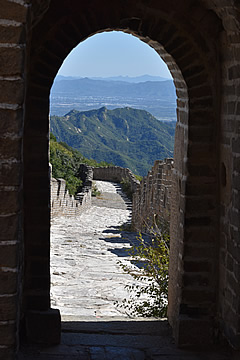
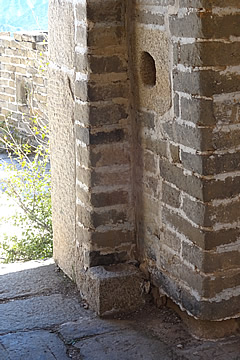
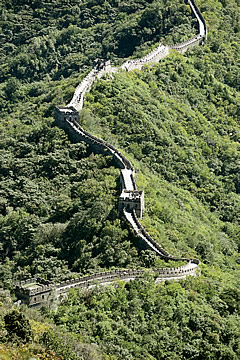
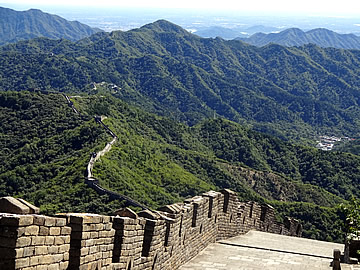
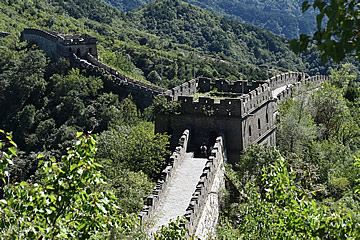
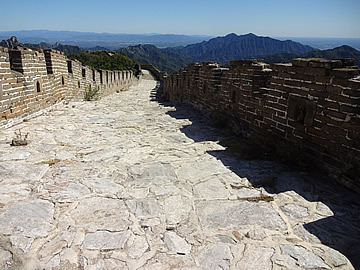
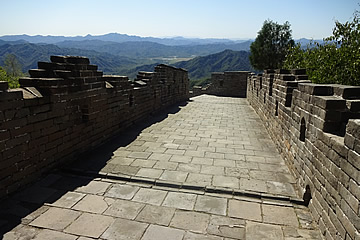
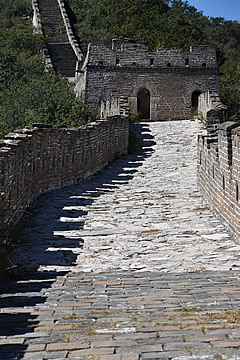
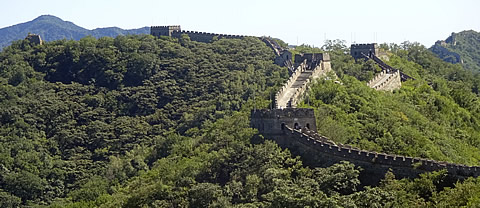
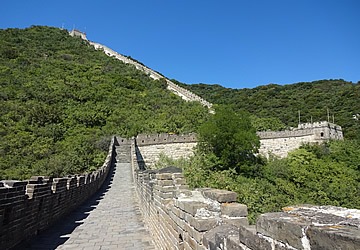
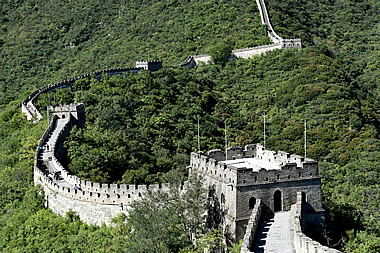
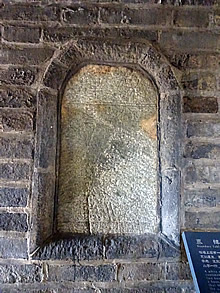
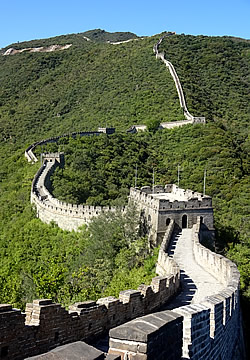
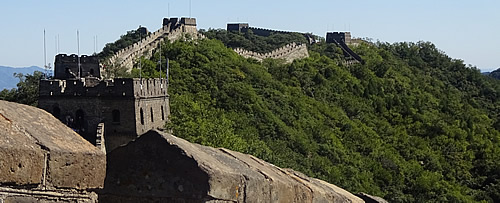

There were tourists at the Mutianyu section, most hadn't wandered too far from the cable car.
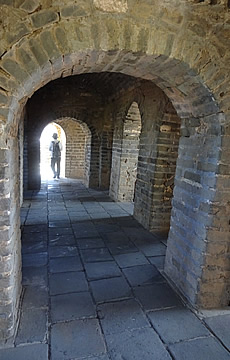
This morning was a real highlight of our whole trip; a really great walk with very few other people around, fantastic views and unreconstructed wall - amazing.